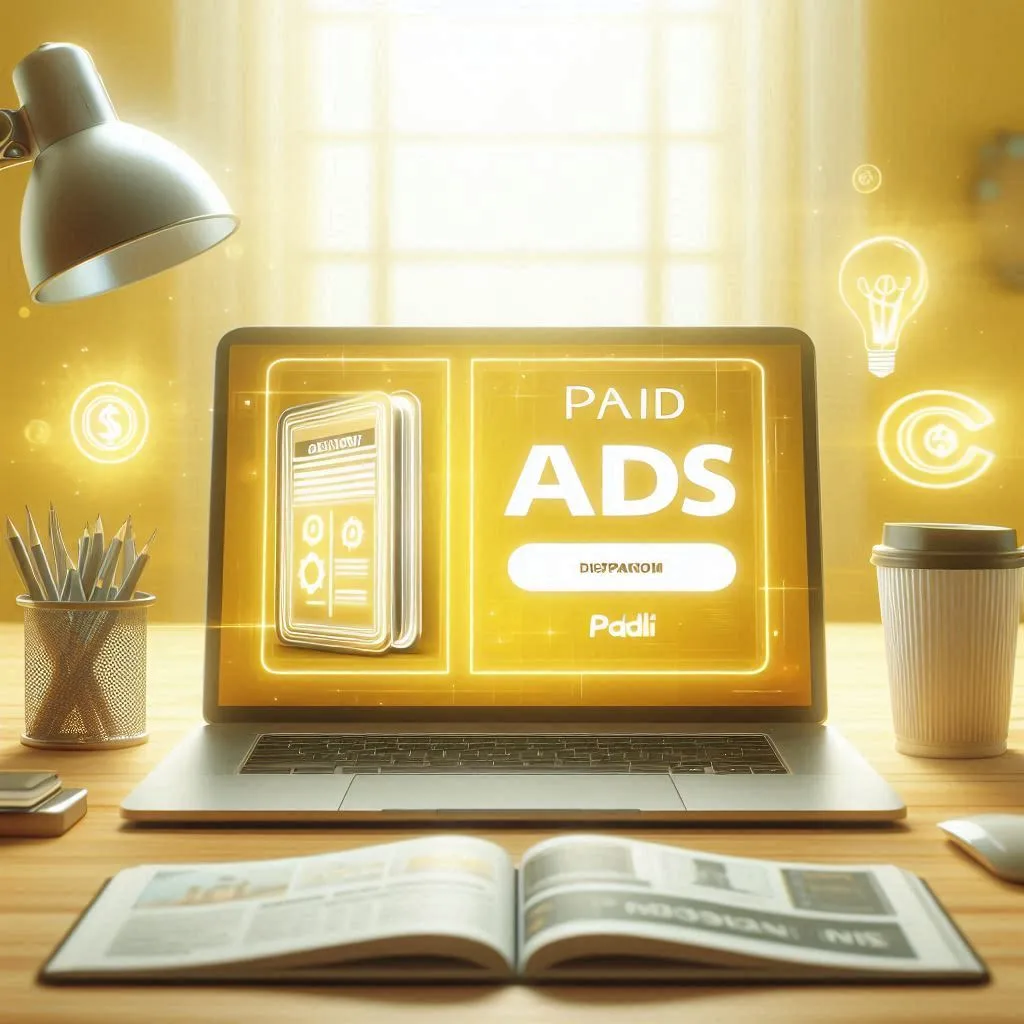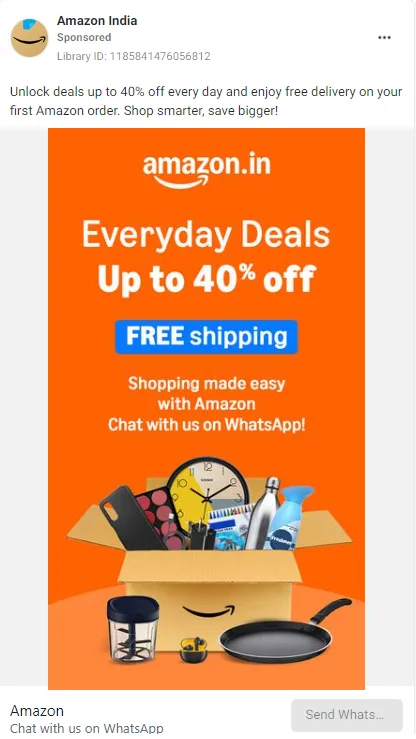
Running paid ads is one of the quickest ways to get in front of your target audience, but let’s be honest—it’s frustrating when you don’t see conversions. You’re spending money, time and energy, but the results just aren’t there.
The good news? It’s not a lost cause. Most of the time, small tweaks can make a world of difference. In this in-depth guide, we’ll look at the key reasons why your paid ads aren’t converting and more importantly how to fix them.
Table of contents
- You’re Targeting the Wrong People
- Your Ad Copy Isn’t Convincing
- Your Creative Isn’t Grabbing Attention
- Your Landing Page is Losing Visitors
- You’re Not Retargeting Lost Visitors
- Your Ads Are Suffering from Fatigue
- You’re Ignoring the Power of A/B Testing
- Your Budget is Misallocated
- You’re Not Using Exclusion Targeting
- You’re Overlooking the Power of Ad Scheduling
- In Conclusion
- Frequently Asked Questions
1. You’re Targeting the Wrong People
If your ads aren’t converting, there’s a good chance that you’re either targeting too broad of an audience or simply the wrong people.
Meta Ads offer incredibly detailed targeting options, but many of you make the mistake of using broad settings like “all people interested in jewellery” instead of zeroing in on a specific segment.
Here’s what you can do:
Let’s say you’re running ads for high-end jewellery. You should be targeting users in the age group most likely to afford it—say 25-50 years old.
Now categorising just the age group would be too broad as not everyone in this specific age group would be your customer. Hence, you can further narrow down your target audience based on gender.
For a luxury jewellery brand, you’ll likely find that women engage more. However, men can be potential buyers during events like Valentine’s Day, birthdays and anniversaries.
So, you can run separate ad sets for men and women, but tailor the messaging accordingly. For women—focus on how it enhances their look; for men—emphasise gifting.
If you’re selling high-end pieces, you’ll want to target high-income cities or neighbourhoods.
Focus on metros like Mumbai, Delhi and Bangalore for urban clientele. If your client is a local jeweller, target areas close to their retail store or showroom.
2. Your Ad Copy Isn’t Convincing
If your ads aren’t converting, your copy might not be resonating with your audience. And no, it’s not about being clever or poetic. It’s about speaking directly to the customer’s needs.
Your audience has a problem and your client’s product or service is the solution. Make it clear how your product will make their life easier.
Example: Instead of saying, “Buy Our Marketing Software,” try something like “Struggling with complex reports? Simplify your marketing analytics with one click.”
Additionally words like “free”, “exclusive” and “guaranteed” grab attention. Make your ad copy persuasive and focused on a specific benefit.
Example: “Get 20% off your first order” This shows value and urgency.
Lastly, don’t be vague. If you want them to sign up, say “Sign Up Now,” not just “Learn More.” Be direct and clear about what you want them to do.
Look at these ad copies for reference.
IndiGo to the world.
Save up to 25% when you fly with IndiGo. Use code ‘6EWORLD’.
Book now: https://t.co/CflOawVSCN pic.twitter.com/nJlGZqI5YU
— IndiGo (@IndiGo6E) October 19, 2023

3. Your Creative Isn’t Grabbing Attention
No matter how good your copy is, if your visuals are bland or irrelevant, your audience will scroll past without noticing. Great creativity is all about standing out and resonating with your audience.
Follow these tips to make sure ad creatives are on point.
- Use High-Resolution Images: Use high-quality, close-up shots that highlight the product.
- Test Video Ads: Videos consistently outperform static images. They have a 48% higher sales rate than static ads. Even a 5-10-second clip that shows how your product looks in different lighting or settings can make a huge difference.
- Use Real-Life Scenarios: Showcase your products in everyday situations or special moments. When people can see themselves using your product, they’re more likely to click and convert.
4. Your Landing Page is Losing Visitors
Most professionals in a digital marketing agency often overlook landing pages. It’s the page where a user will land after clicking on your ad.
Even if your ads are great, a poor landing page can ruin the user experience. If your landing page is slow, confusing or irrelevant, people will click away before converting.
Google data shows that if your page takes more than 3 seconds to load, you’ll lose 40% of visitors.
If your ad is about diamond rings, don’t send visitors to your homepage. Send them to a page showcasing those diamond rings with clear pricing, benefits and testimonials.
The more seamless the transition from ad to landing page, the higher your conversion rates.
5. You’re Not Retargeting Lost Visitors
On average, only 2% of visitors convert on their first visit to a website. Retargeting is essential for bringing back those who showed interest but didn’t convert the first time.
Set Up Facebook Pixel & Google Retargeting Tags
These tools track visitors who came to your site but didn’t make a purchase. With this data, you can create highly targeted retargeting ads to bring them back.
If someone viewed a product but didn’t buy it, show them an ad reminding them of the product. Add a sense of urgency with offers like “Only a few left!” or “Limited-time discount.”
Segment Your Retargeting Audience
Don’t retarget everyone the same way. Someone who added an item to their cart but didn’t checkout should see different ads than someone who just browsed.
You can create segmented audiences based on behaviour (e.g., added to cart but didn’t purchase, viewed product page, etc.)
This way your ads will feel relatable to the audience. Hence they are more likely to make a purchase.
6. Your Ads Are Suffering from Fatigue
When the same ad is shown to the same audience over and over again, people stop paying attention. This is called ad fatigue and it can kill your conversion rates.
To avoid ad fatigue, create multiple versions of your ad with different images, videos and copy. Rotate them every 1-2 weeks.
Experiment with different ad formats like carousel ads, video ads or collection ads. Meta ads have options that allow you to engage your audience in various ways, preventing the same ad style from getting stale.
For example—Try running video ads for one week, followed by static ads the next. This keeps your audience interested and engaged.
Dynamic ads allow you to automatically show different products to different users based on what they’ve viewed or interacted with. These ads constantly refresh themselves with relevant products, avoiding ad fatigue.
7. You’re Ignoring the Power of A/B Testing
Sometimes, the smallest tweak can lead to massive improvements in conversions, but you won’t know what works until you test it. If you’ve been running ads without any A/B testing, you’re missing out on optimisation opportunities.
You might want to test a new image, headline or CTA. Whatever it is, test one change at a time to see which variable makes the difference. For instance —Image Test for a jewellery brand. Use the same ad copy but test different visuals. One could be a close-up of the jewellery and the other could show it being worn in a real-life setting.
After that, you can test the headline or ad copy. You could test an emotional headline vs. a straightforward one. For example, “The Diamond Necklace of Your Dreams” vs. “Shop Our Diamond Necklace Today.”
You can also test different audiences.
For example, test —-younger women (18-25) vs. older women (35-45). Or try targeting men who are likely to buy gifts vs. women who are looking for self-purchases.
Once your test runs for 7-14 days, check the metrics. Which version of the ad got more clicks? Which one resulted in more conversions? Keep the winning variant and continue testing.
8. Your Budget is Misallocated
Sometimes, your ads aren’t converting because your budget is stretched too thin across campaigns that aren’t working. If you’re not adjusting your budget based on performance, you might be wasting money on underperforming ads.
Monitor your ad sets every few days to see which ones are getting the best cost-per-click (CPC) and cost-per-conversion. Pause the underperforming ones and shift that budget towards the ones driving results.
Before putting a large chunk of your budget into an ad set, run a small-budget test to see if it performs. If it converts well, you can then increase the spend gradually.
9. You’re Not Using Exclusion Targeting
While we often focus on who to target, exclusion targeting is just as important. If your ads are showing to people who are unlikely to convert—such as existing customers or people outside your shipping zones—you’re wasting money.
If someone has recently purchased from your brand, you don’t want to show them ads for the same product. What you can do is upload a list of existing customers or create a custom audience of people who have completed a purchase and exclude them from future ads.
Also, exclude unqualified locations: If you don’t ship to certain regions or countries, exclude those areas from your campaigns.
Select specific cities or regions where you don’t operate, ensuring your ads only show to people who can actually buy from you.
And please note that sometimes, certain demographics or interest groups just aren’t converting. If data shows they aren’t clicking or buying, exclude them to save budget.
10. You’re Overlooking the Power of Ad Scheduling
Are you showing your ads at the right time? Running ads 24/7 might seem like a good idea, but if your audience is most active during certain hours, you’re wasting money by showing ads during low-activity periods.
Check when your audience is most active. Look at your analytics to see when people are clicking and converting. For example, if you’re targeting working professionals, they’re more likely to engage with your ads after work hours (6 PM – 10 PM).
And if you’re targeting multiple countries, remember that different time zones can affect performance. Schedule your ads to run during peak hours in each region.
If you’re running large-scale campaigns with significant spend, day-parting can also be useful. For instance, you can schedule your ads to run heavily on weekends if that’s when most conversions happen.
In Conclusion
Paid ads not converting isn’t the end of the world, but it’s a signal that something needs to change. Whether it’s refining your audience targeting, improving your ad copy or optimising your landing page, there are actionable steps you can take to turn things around.
At the end of the day, paid advertising isn’t just about throwing money into a platform and hoping for the best—it’s about strategy, testing and constant refinement.
If you’re ready to elevate your ad game and start seeing real results, the tips above will give you the edge you need.
We hope your next ad campaign brings lots of conversions.
Cheers!



